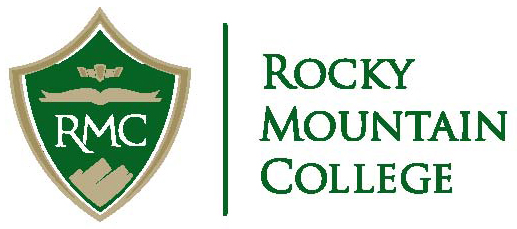Pba Ph
February 4, 2021 2025-09-29 16:52Discover All NBA Logos with Names and Their Unique Design Stories

I still remember the first time I truly appreciated the artistry behind NBA logos. It was during my college years at Mapua University, where I spent two seasons playing for Team B back in 2017. During that period, I had the privilege of witnessing Coach Co's approach to team identity, which surprisingly mirrored the strategic thinking behind NBA branding. Just as Coach emphasized how our team's visual identity could influence both our performance and fan engagement, I began to understand why NBA organizations invest millions into perfecting their logos. The connection between athletic excellence and visual storytelling became increasingly clear to me during those formative years.
The evolution of NBA logos represents more than just corporate rebranding—it's a reflection of basketball's cultural journey. Take the Chicago Bulls' iconic logo, for instance. Designed in 1966 by the legendary designer Dean Wessells, it has remained virtually unchanged for over five decades. What fascinates me about this particular design is its deceptive simplicity. The raging bull conveys both the city's stockyard history and the team's competitive spirit, yet it does so with such elegant minimalism. I've always believed this longevity speaks volumes about getting the design fundamentals right from the beginning. The team reportedly invested around $50,000 in the original design—a substantial amount at the time, but an absolute bargain considering its enduring value.
When examining the Milwaukee Bucks' recent redesign, I can't help but admire their bold approach. The 2015 rebranding cost approximately $750,000 and introduced a more modern deer head with a sharper, more aggressive angle. While some traditionalists criticized the departure from the previous cartoonish buck, I found the new design brilliantly captured the team's evolution. The subtle incorporation of the letter 'M' in the antlers is the kind of thoughtful detail that separates good logos from great ones. Having experienced how team symbols can unite players and fans alike during my competitive days, I recognize how crucial these visual elements are in building community identity.
The Golden State Warriors' bridge logo perfectly demonstrates how geographic identity can be woven into sports branding. Introduced in 2019 as part of their move to the Chase Center, the design features the San Francisco-Oakland Bay Bridge with the team's signature blue and gold color scheme. What many might not realize is that the design underwent 47 iterations before the final version was approved. The bridge not only represents the team's connection between Oakland and San Francisco but also serves as a metaphor for bridging the team's history with its future. This thoughtful approach to symbolism is something I wish more teams would emulate.
Let me share a personal favorite—the Portland Trail Blazers' pinwheel design. Created in 1970 by the New Jersey-based design firm Frank J. Wren Associates, the logo represents the five-on-five nature of basketball through its rotating lines. What I love most about this design is its mathematical precision combined with sporting symbolism. The interlocking lines form what appears to be a compass, nodding to the team's "trailblazing" name while maintaining visual harmony. During my time with Team B, we often discussed how the best logos work on multiple interpretive levels, and the Blazers' emblem exemplifies this principle beautifully.
The recent trend toward minimalist redesigns has produced mixed results in my opinion. The Philadelphia 76ers' 2020 update removed much of the decorative elements from their previous logo, creating a cleaner but somewhat less distinctive mark. While the simplification likely improved reproduction across digital platforms, I can't help but feel something of the team's character was lost in translation. The original 1996 design had more elaborate typography and a richer blue tone that, to me, better captured the historical significance of the franchise. This tension between modernization and tradition continues to challenge NBA marketing teams with each redesign cycle.
Looking at the league's global expansion, the Toronto Raptors' logo stands out as particularly effective international branding. The claw gripping the basketball immediately communicates aggression and intensity, while the patriotic red color connects directly to Canada's national identity. What many international fans might not know is that the logo was inspired by the Jurassic Park franchise's popularity during the team's 1994 inception. The current version, refined in 2020, maintains the claw motif while sharpening its execution. Having played with international teammates who often commented on NBA logos, I've noticed how the Raptors' design consistently resonates across cultural boundaries.
The financial investment in these designs continues to astonish me. When the Oklahoma City Thunder debuted in 2008, they reportedly spent over $1.2 million developing their initial brand identity, including the shield-like logo with the basketball embedded in the lettering. While some critics found the design too generic, I appreciate how it established immediate recognition for a new franchise. The color scheme of sunset orange, navy blue, and gold successfully evoked the Oklahoma landscape while creating a distinctive visual identity. This demonstrates how expansion teams face the unique challenge of building from scratch rather than evolving existing designs.
Reflecting on my conversations with Coach Co back in 2017, I realize how his insights about team identity parallel the strategic thinking behind NBA logos. He often emphasized that effective symbols should work equally well for players and fans—inspiring the former while creating emotional connections with the latter. The most successful NBA logos achieve precisely this balance, serving as competitive rallying points while building commercial value. As the league continues to globalize, these visual markers become increasingly important in transcending language barriers and cultural differences. The ongoing evolution of team logos represents not just changing design trends but the dynamic relationship between basketball teams and their communities worldwide.

NBA Trade Update 2021: Latest Roster Moves and Game-Changing Deals Before Deadline
As I sit here reviewing the latest NBA trade developments from the 2021 deadline period, I can't help but feel this was one of the most fascinating trade win
NBA 2021 Playoff Standings: Complete Team Rankings and Postseason Picture
As I sat down to analyze the 2021 NBA playoff standings, I couldn't help but notice how coaching changes can dramatically reshape a team's postseason traject


Zach Collins NBA Career Analysis: Rising Star's Journey and Future Prospects
I remember watching Zach Collins during his rookie season and thinking, "This kid's got something special." Standing at 6'11" with the mobilit
- Monday, September 1, 2025 (Labor Day)
- Thursday and Friday, November 27 & 28, 2025 (Thanksgiving)
- Wednesday, December 24, 2025 through
Thursday, January 1, 2026 (Winter Break) - Monday, January 19, 2026 (Martin Luther King Jr. Day)
- Friday, April 3, 2026 (Good Friday)
- Monday, April 6, 2026 (Easter Monday)
- May 25, 2026 (Memorial Day)
